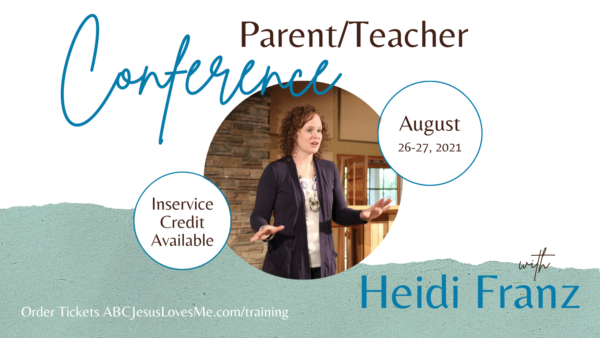I thank God that we attend a church that allowed my husband and I a chance to refresh and renew without our young children crawling all over us. Because of children’s church, I came out of the worship service “filled up” and ready to hit the week ahead with our young children.
But when we visited my parents’ church, we didn’t have the option of Children’s Church. To make it harder, the church was very small so any noises were amplified and heard by all.
And I know that this is very common as many churches don’t offer viable options for younger children during “big church.”
Continuing the series of ideas on how to attend church with young children, the next three posts will share practical tips to help you return to church and not only survive the experience, but truly be refreshed each week.
Expectations for Keeping Kids in Church

I believe success for you and the child begins with setting healthy, age-appropriate, and realistic expectations.
1. What are Your Expectations for Your Child at Church?
Children will only do as well as you believe they are able. If you believe the child will be successful, provide the training, and prepare age-appropriate tools, most children can succeed.
Yes, even toddlers can be trained to sit quietly during church. From experience, I trained my four children and have seen it done many, many times even in the toughest situations.
With that said, success may need to be a gradual experience. Start small and work up to the full amount of time. For example, begin with a 15-minute goal and gradually increase the time each week. Explain to the child your plan and celebrate successes along the way.
2. Matching Your Spouse’s Expectations
How many times have my husband and I gone into a situation thinking we were on the same page only to learn halfway through that we didn’t have the same expectations. We call these “unspoken expectations.” We each brought to the church pew presumptions for what was and wasn’t okay behavior.
Here are some questions to begin the discussion:
- May the child sit on your lap?
- May your child sit on the floor?
- May the child stand? On a chair?
- Is the child allowed to change activities?
- May your child whisper?
- Who will take the child to the bathroom?
- Where in the sanctuary can your family be most successful?
- If the child gets noisy, what will you do?
With your spouse, agree on the expectations for your child’s behavior and explain these to the child before you go to church. Know that the expectations may need to be tweaked with time and expectations may need to be different for each child.

3. Consequences?
When thinking about consequences, ask yourself the following questions:
- Is the behavior a maturity issue?
- Have I trained my child to be successful or is this something we need to work on at home?
- Is the behavior a heart issue?
A maturity issue means that you are asking the child to do something beyond their developmental ability. This may require adjusted expectations, bringing different items to occupy the child, or more training at home. Remember that training comes before consequences. A heart issues means that the child has been trained and provided the necessary skills to be successful, but it choosing not to.
For heart issues, create with your spouse a plan of appropriate consequences. These consequences do not have to be immediate, but be consistent.
Here is an example.
During the service, the preschooler continually talks out. This is not a maturity issue as a preschooler with normal development knows how to use the multiple voices (e.g. whisper, talk, shout). If the preschooler had never been taught the voices and when to use them, training would occur first. This Volume Control Chart can be very helpful! But if the child has been trained and choses not to use self-control with his or her volume, a consequence for the poor choices would be necessary.
4. Stick to Your Expectations
This is so important. Once you have agreed upon the expectations for a child at church, don’t cave just because the child isn’t obeying. It is so tempting to take the child to the foyer to play and run around. But if you do it once, the child will expect it the next time. And the next time. If need be, take the child out of the sanctuary to discuss the expectations and then bring the child back in.
5. Know When to Abandon Ship
When a child’s behavior begins to disrupt others from the worship service, sometimes the best thing to do is abandon ship knowing that respecting others is the best option. Remove the child as quickly as possible. Try again next week after applying the practical tips that will be shared in the upcoming posts!
View the How to Survive Restaurants and Church with Wiggly Kids video of this series.
Next week: 5 Tips to Keep Your Child Quiet During Church

Join us in Dallas, Texas for a 2-day Parent and Teacher Conference on August 26-27, 2021. Learn how to parent and teach intentionally, discipline without yelling or threats, create a learning environment, and discover how to teach the Bible and academics to children. Early Registration ends this week!